Gain insight into the pivotal transition from the Old to the New Testament in the Bible, marking a defining moment in Christian history.

When Does the New Testament Begin in the Bible
Navigating the transition from the Old to the New Testament in the Bible is like tracing the path of a river from its source to the sea—you know there's a significant shift, but pinpointing the exact location requires understanding both the landscape and the flow of history.
You're about to explore not just the physical demarcation in the pages of the Bible, but also the profound historical and theological shifts that mark the beginning of the New Testament. This journey promises to illuminate how this pivotal moment has shaped Christian faith, leaving you with a deeper appreciation for the complexities and nuances of biblical interpretation.
Key Takeaways
- The New Testament begins after the Old Testament, marking a profound shift in religious thought and narrative.
- It introduces the life and teachings of Jesus Christ, central to Christian faith.
- Canonical debates have influenced where the New Testament starts, varying slightly across Christian denominations.
- The transition reflects a reinterpreting of the Old Testament in light of Christ's life and message.
Understanding the Bible's Structure
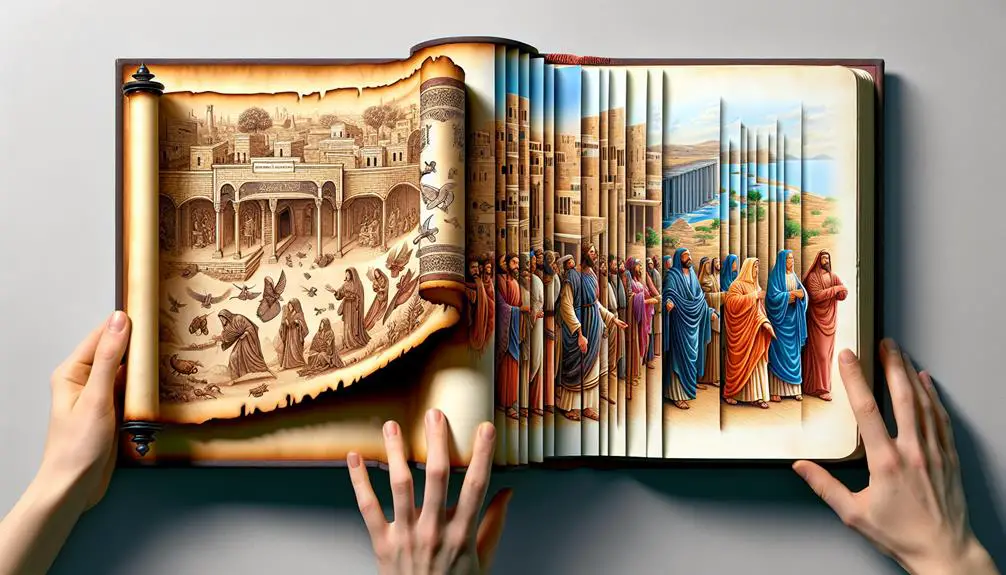
To fully grasp the organization of the Bible, it's essential to recognize that it's divided into two main sections: the Old Testament and the New Testament. This division is foundational in understanding the chronological and theological evolution within the text. The Bible, written in several Biblical languages, including Hebrew, Aramaic, and Greek, reflects the diverse cultures and epochs it encompasses. This linguistic diversity isn't just a testament to its historical depth but also plays a critical role in the interpretation and understanding of its teachings.
Canonical debates have significantly influenced the Bible's structure, with discussions focusing on which books should be included in the canon. These debates weren't merely academic but were deeply intertwined with theological and cultural considerations of different Christian traditions. The outcome of these debates has led to variations in the Bible's composition across different Christian denominations. For instance, the Catholic Bible includes books that aren't found in the Protestant Bible, a difference rooted in canonical disagreements.
Understanding these foundational elements—the division between the Old and New Testaments, the role of Biblical languages, and the impact of canonical debates—provides a critical context for exploring the Bible's content and structure. It reveals the complexity and depth of the text, guiding your exploration of its teachings and historical evolution. As you delve deeper into the Bible, keeping these aspects in mind will enhance your comprehension and appreciation of this sacred text.
The Old Testament Overview
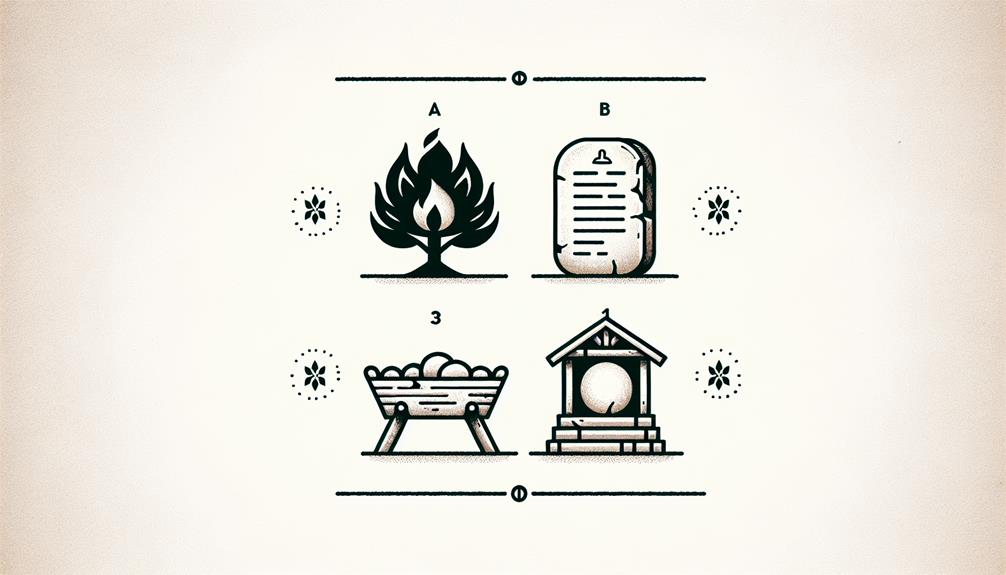
Delving into the Old Testament, you'll discover it serves as both a historical record and a foundational text for understanding the religious, cultural, and ethical heritage of Judeo-Christian traditions. This collection of books, written over centuries, encapsulates the early narrative of humanity, its relationship with the divine, and the moral frameworks that have shaped Western civilization.
The Old Testament isn't just a singular narrative but a compilation of various genres including law, history, poetry, and prophecy. It begins with the Creation story, which sets the stage for humanity's ongoing interaction with God, and extends through the history of the Israelites, their struggles, triumphs, and the prophetic messages directed to them.
Here are key aspects to appreciate in your study:
- The Creation story in Genesis offers insights into the Judeo-Christian understanding of the world's origin, human nature, and the concept of divine sovereignty.
- The historical books narrate the journey of the Israelites from their patriarchal beginnings, through their exodus from Egypt, to their establishment in the Promised Land, and their eventual monarchy.
- Wisdom literature, like Psalms and Proverbs, provides poetic and philosophical reflections on faith, suffering, and the pursuit of a virtuous life.
- Prophetic books contain messages from prophets sent by God to guide, warn, and comfort the people of Israel, often with a forward-looking perspective towards redemption and hope.
Each component of the Old Testament enriches the tapestry of Judeo-Christian theology, offering layers of meaning that have been pondered, debated, and cherished through millennia.
The New Testament Transition

Having explored the rich tapestry of the Old Testament, let's now turn our attention to the New Testament, where the narrative of Christianity truly begins to unfold. The transition between these two sections is more than a mere turning of a page; it signifies a profound shift in religious thought, historical context, and testament interpretation. This juncture is where canonical debates come into sharp focus, reflecting on the criteria that distinguished these texts as sacred and foundational for Christian theology.
Dimension |
Old Testament |
New Testament |
|---|---|---|
Time Period |
Creation to just before Christ |
Life of Christ to the early Christian church |
Language |
Primarily Hebrew |
Primarily Greek |
Central Theme |
Covenant with Israel |
Life, death, and resurrection of Jesus Christ |
This table encapsulates the stark differences and the seamless continuity between the two Testaments, fostering a deeper understanding of the religious and historical transition that takes place. The New Testament doesn't just start a new chapter in religious history; it reinterprets the Old in light of the coming of Christ, thus engaging in canonical debates about the nature and identity of sacred texts.
These debates have shaped the way Christians understand their holy scriptures and have led to varied interpretations and understandings. The shift from the Old to the New Testament marks a pivotal moment in religious history, one that invites believers and scholars alike to ponder the complex relationship between these two parts of the Christian Bible.
Key Historical Context
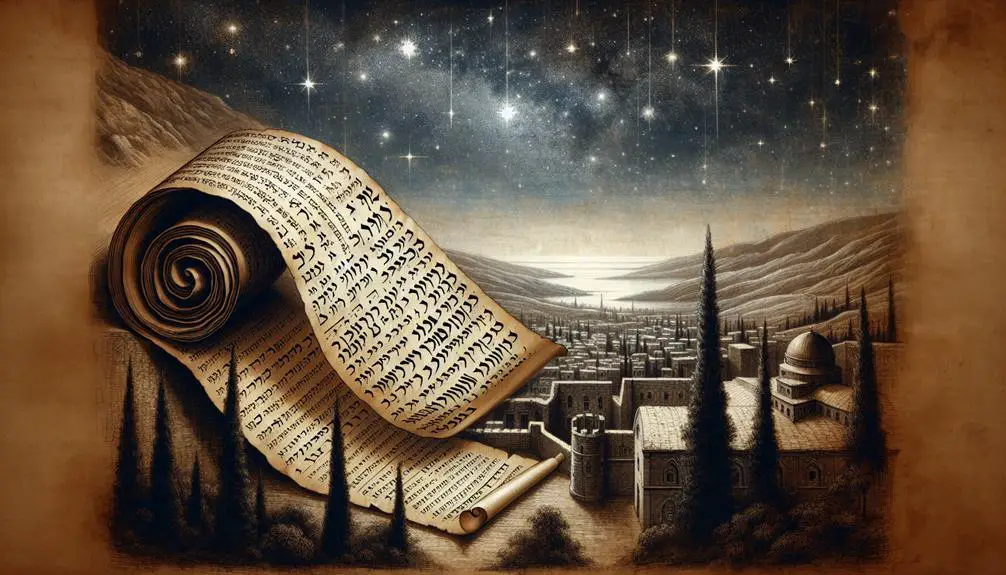
Understanding the key historical context of the New Testament's era offers insights into the profound transformations that shaped early Christianity. This period was marked by significant social, political, and religious changes, deeply influenced by the Roman Empire's control and the enduring presence of Jewish customs. To grasp the depth of these transformations, it's crucial to consider several key points:
- Roman Political Dominance: The Roman Empire's expansive control played a pivotal role in the historical backdrop of the New Testament. Its political structures, systems of governance, and infrastructure significantly impacted the societal layout in which early Christian communities developed. The Pax Romana, or Roman Peace, provided a relatively stable environment for Christianity's spread.
- Cultural Melting Pot: The era was characterized by a blend of cultures within the Roman Empire, including Greek, Roman, and Eastern influences. This cultural diversity influenced early Christian thought, theology, and practices, as seen in the New Testament texts.
- Jewish Customs and Laws: Jewish traditions and laws were central to the lives of Jesus and his first followers, who were Jews. Understanding these practices is vital for interpreting the New Testament's references and narratives accurately.
- Socio-Religious Conflicts: Conflicts between different religious groups, including tensions within Judaism and between Jews and Romans, set the stage for much of the New Testament narrative. These conflicts often revolved around identity, worship practices, and allegiance.
Impact on Christian Faith
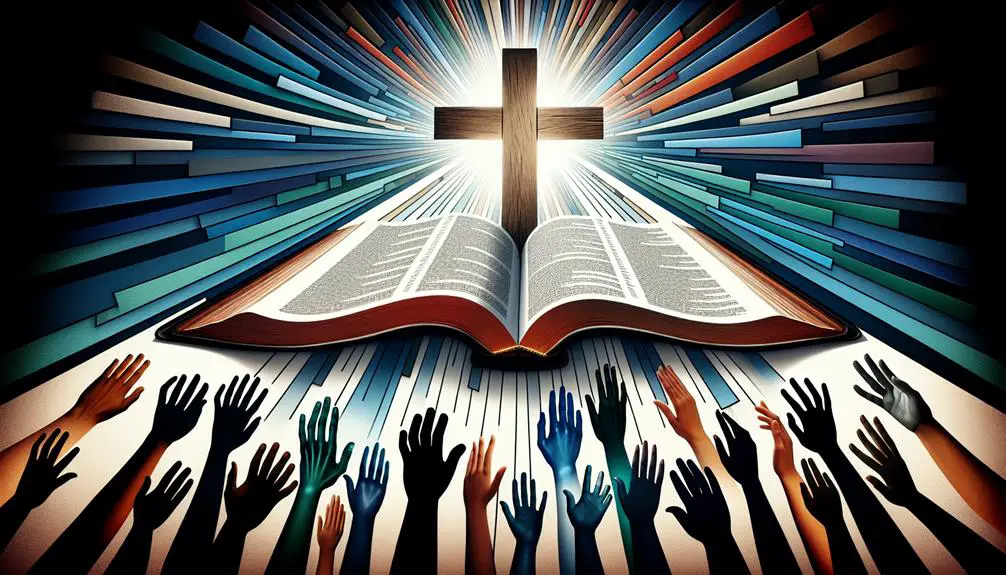
The New Testament's emergence significantly reshaped the Christian faith, introducing foundational doctrines and practices that continue to define it today. You are witnessing in these texts, the embodiment of Divine Revelation, which not only recounts the life and teachings of Jesus Christ but also sets the stage for the development of Christian theology and ecclesiology. This shift marked a pivotal moment in religious history, emphasizing a personal relationship with God and the importance of faith in salvation.
As you delve deeper, you'll realize that the New Testament's impact on spiritual growth cannot be overstated. Its teachings provide a framework for understanding the nature of God, the path to redemption, and the ethical guidelines for leading a life that reflects Christian values. The emphasis on love, compassion, and forgiveness has profoundly influenced not just individual believers but the entire course of Western ethical thought.
To illustrate the dichotomy between the Old and New Testaments and their respective impacts on Christian faith, consider the following table:
Aspect |
Old Testament |
New Testament |
|---|---|---|
Focus |
Law and Covenant |
Grace and Faith |
Relationship with God |
Collective Covenant |
Personal Relationship |
Path to Salvation |
Adherence to Law |
Faith in Jesus Christ |
This table highlights the evolutionary nature of Divine Revelation and its implications for spiritual growth. The New Testament, through its narratives and teachings, invites you into a more intimate and personal relationship with the divine, encouraging a journey of faith that is both transformative and enriching.
Frequently Asked Questions
How Do Different Christian Denominations Interpret the Beginning of the New Testament Within Their Theological Frameworks?
You'll find that different Christian denominations interpret the beginning of the New Testament through the lenses of covenant theology and apostolic tradition. This analytical approach highlights how they contextualize the shift from the Old to the New Covenant.
While some emphasize the life and teachings of Jesus as the starting point, others lean into apostolic tradition, seeing the New Testament's beginnings in the early church's teachings and practices.
Are There Any Controversies or Debates Among Scholars Regarding the Precise Moment or Event That Signifies the Start of the New Testament Era?
Yes, scholars debate the exact moment the New Testament era begins, focusing on historical accuracy and manuscript variations.
They delve into texts and contexts, analyzing how different manuscripts may suggest varying starting points.
This isn't just about pinpointing a date but understanding the theological and historical shifts that define the era.
You'll find that these discussions often reveal more about the complexity of early Christian history than a single, definitive answer could.
How Do Non-Christian Religions View the Transition From the Old Testament to the New Testament, and Do They Recognize It in Any Way?
You're navigating through a historical tapestry, where threads of different beliefs weave together. Islamic perspectives view the transition as significant but through a different lens, focusing on the Quran as their holy book.
Jewish acknowledgment of the New Testament is minimal, as they adhere to the Torah and Talmud, viewing them as the cornerstone of their faith. Both standpoints offer a unique insight, showing respect yet maintaining their distinct religious identities and traditions.
Have There Been Any Significant Archaeological Findings That Challenge or Confirm Traditional Beliefs About the Onset of the New Testament Period?
Absolutely, there have been significant archaeological findings that both challenge and confirm traditional beliefs about the onset of the New Testament period.
By analyzing manuscript dating and understanding the cultural context, you'll find that these discoveries offer a nuanced view.
They don't just validate historical timelines; they also provide insight into the complexities of early Christian communities and their interactions with surrounding societies, enriching our comprehension of this pivotal era.
In What Ways Have Modern Translations and Interpretations of the Bible Affected the Understanding of the New Testament's Beginning Among Contemporary Believers?
Imagine diving into a sea of words, where every wave is a different interpretation. Modern translations and methodologies have reshaped your understanding of the Bible's messages, especially the New Testament's origins.
These variations, rooted in cultural impacts, challenge and expand traditional views among believers today. Analyzing these translations uncovers how shifts in language and context influence your grasp of biblical beginnings, offering fresh perspectives on ancient texts.
Conclusion
In your journey through the Bible, imagine crossing a vast, historical bridge from the Old Testament's ancient lands into the New Testament's dawn of redemption.
This transition marks not just a chronological passage but a profound shift in the narrative's heart. Here, the fabric of faith is woven with threads of hope, love, and salvation, stitching together a timeless tapestry that profoundly shapes Christian belief.
As you cross this bridge, you're not merely a reader; you're a pilgrim in the realm of divine revelation.

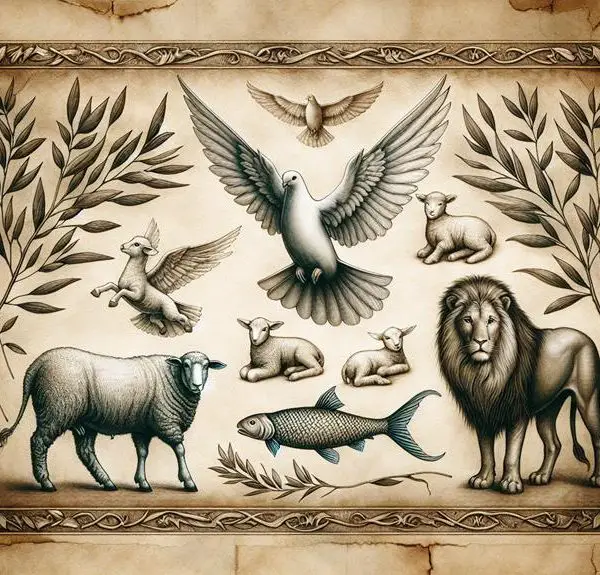

Sign up